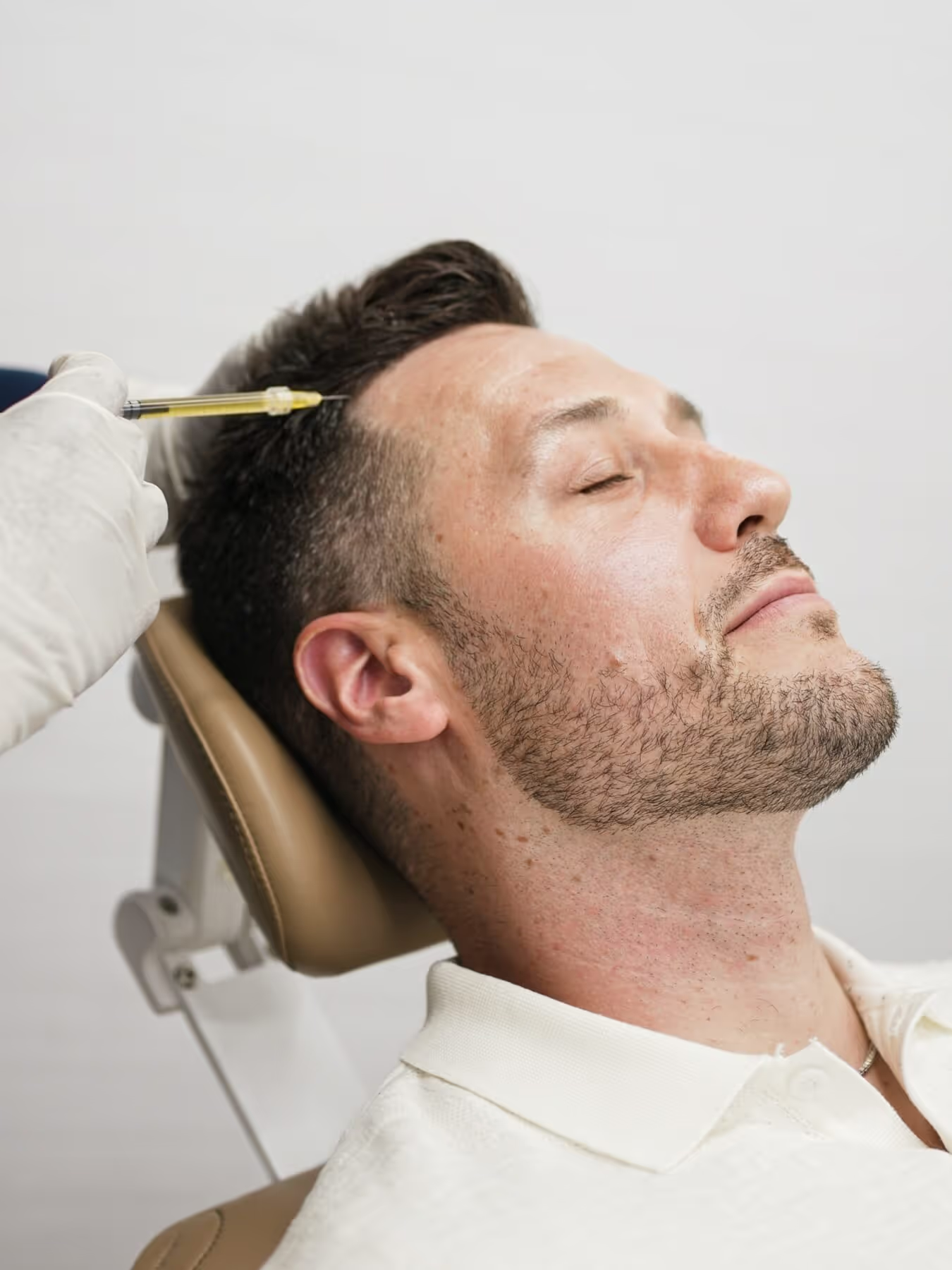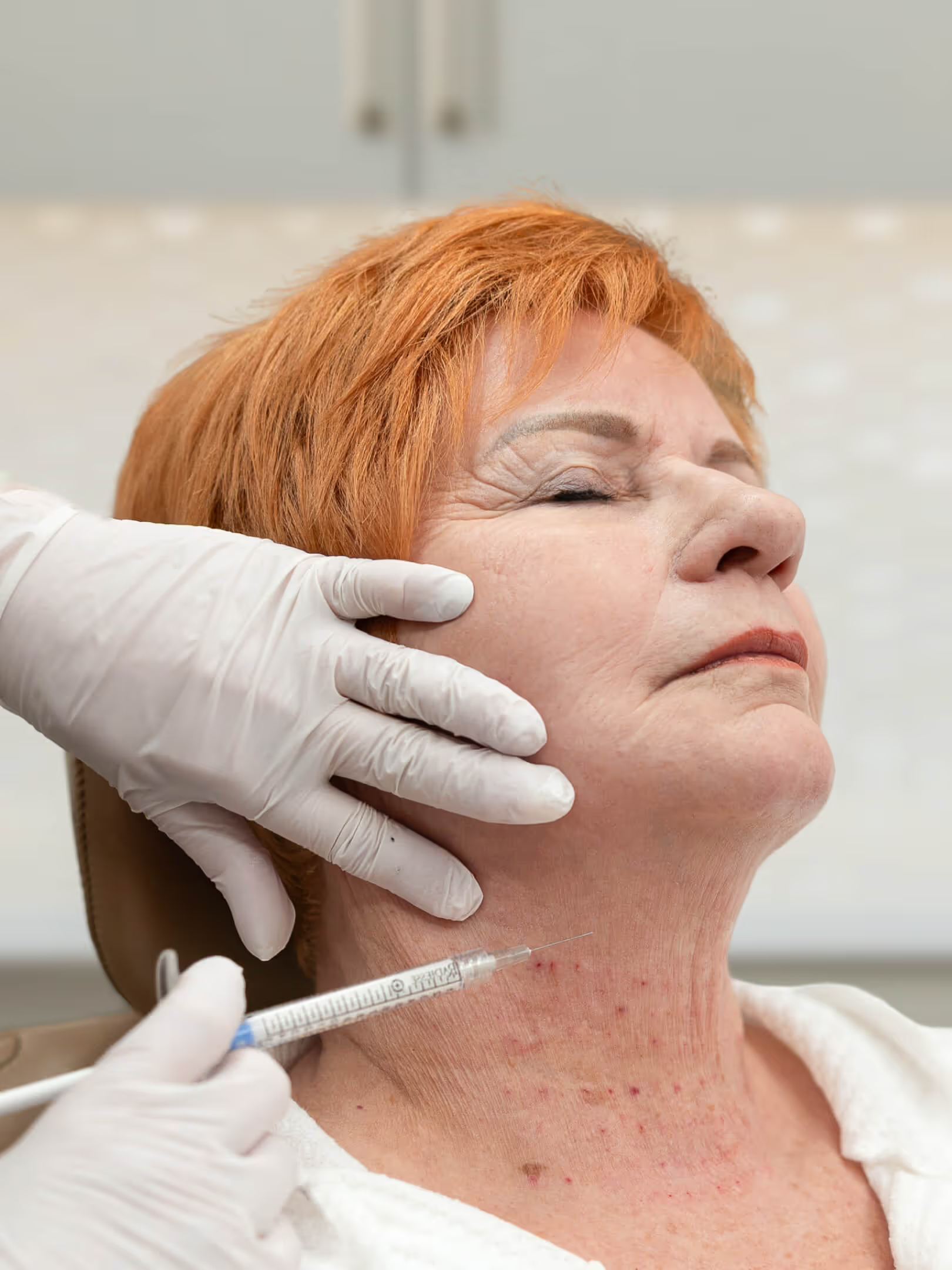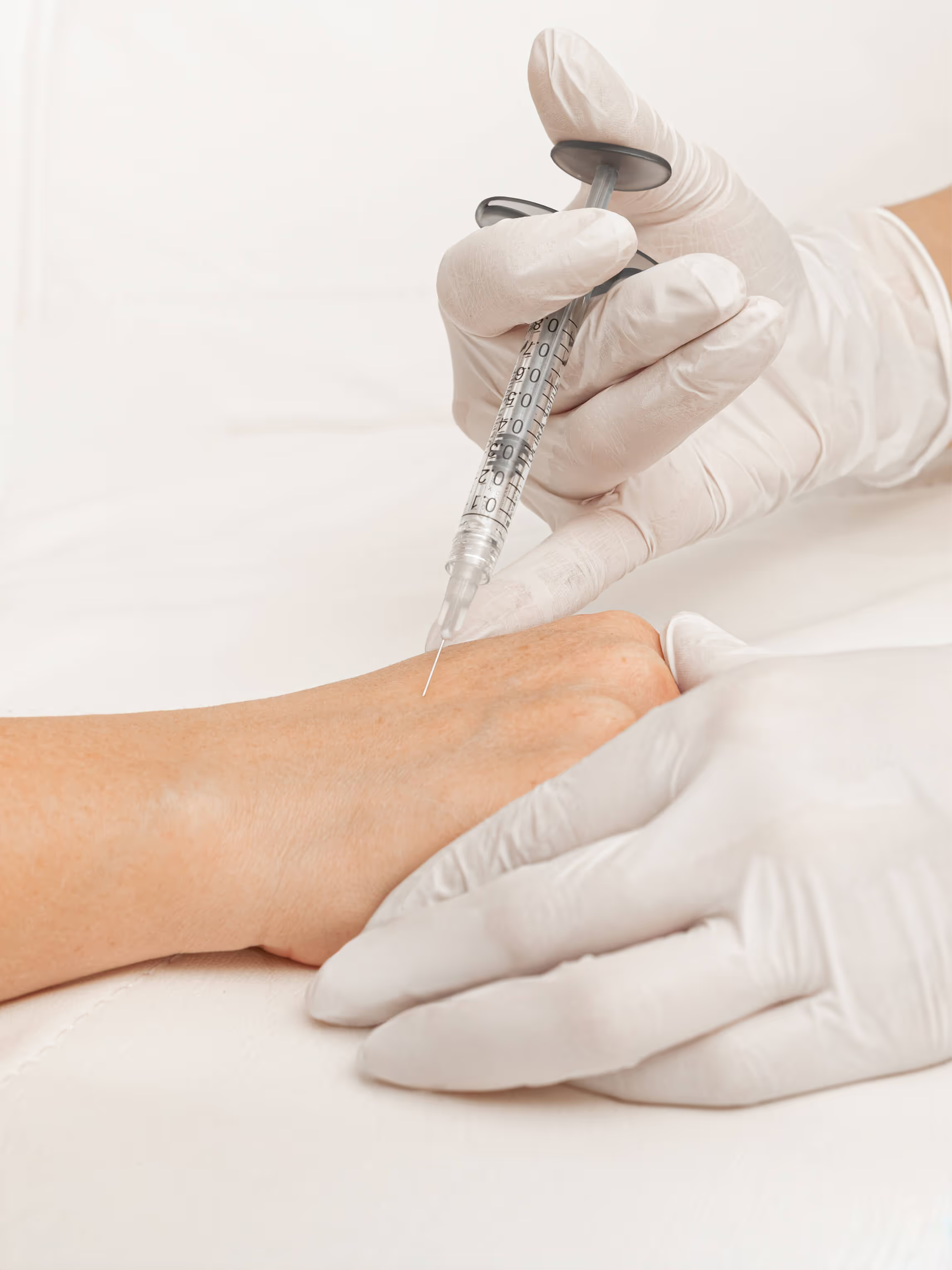Medical Injections
Treatment Time
15–30 minutes
Numbing
Not required
Discomfort
Minimal
Recovery Time
0–1 days

Treatment Overview
At The Face Institute, Medical Botox injections provide a clinically proven, non-surgical solution for chronic migraines, hyperhidrosis (excessive sweating), and TMJ-related jaw pain. Botox works by blocking nerve signals and relaxing muscles, offering long-lasting relief from discomfort and improving overall well-being. Whether you're experiencing frequent headaches, jaw tension, or disruptive sweating, our expert injectors will create a personalized treatment plan tailored to your needs.
Book your complimentary consultation at The Face Institute in Edmonton today and find relief with expert Medical Botox therapy.
All patients must be evaluated by our medical directors to determine their eligibility for treatment, which may include a trial of medications or other recommended therapies.
How to Prepare
Ensure the best possible results by following these preparation steps:
Consultation: Meet with our medical professionals to discuss your symptoms and develop a customized treatment plan.
Stay Hydrated: Drink plenty of water before your appointment to help optimize the effects of the treatment.
Arrive Makeup-Free (For Facial Injections): If treating TMJ or migraines, come with a clean face free of makeup, lotion, or sunscreen.
What to Expect
Each treatment is quick, minimally invasive, and highly effective:
Medical Botox for Chronic Migraines
- Strategic Botox injections in key areas of the forehead, temples, and neck
- Reduces migraine frequency, severity, and duration
- Treatment takes 15–30 minutes, with results appearing over 1–2 weeks
Medical Botox for Hyperhidrosis (Excessive Sweating)
- Injections target underarms, palms, feet, or forehead to block overactive sweat glands
- Reduces excessive sweating for 4–6 months
- Fast and comfortable treatment with minimal downtime
Medical Botox for TMJ & Jaw Pain
- Relaxes jaw muscles to ease clenching, tension, and teeth grinding (bruxism)
- Reduces headaches, facial discomfort, and jaw strain
- May help create a slimmer, more contoured jawline over time
Aftercare
To ensure a smooth recovery and optimal results, follow these aftercare tips:
Avoid Touching or Massaging: Do not rub or press the treated areas for at least 24 hours to prevent migration of the product.
Limit Strenuous Activity: Avoid intensive exercise, saunas, or extreme heat for 24–48 hours.
Stay Upright: Remain upright for at least 4 hours post-treatment to allow the Botox to settle properly.
Monitor Your Symptoms: Migraine relief may take up to 2 weeks to fully develop, while TMJ and hyperhidrosis improvements are usually noticeable within a few days.
Want to know more? Send us a message
The benefits of
Medical Injections
Relieve migraines, excessive sweating, and TMJ pain with medical Botox injections at The Face Institute in Edmonton. Safe, non-surgical, and effective. Book your consultation today!
Non-surgical, fast, and minimally invasive treatment
Long-lasting relief from pain, tension, and excessive sweating
Health Canada & FDA-approved and clinically tested for medical use
No downtime—resume daily activities immediately after treatment
Customized treatment plans tailored to your symptoms
Before & After
Frequently Asked Questions
How does Botox help with chronic migraines?
Botox works by blocking pain signals and relaxing muscle contractions that contribute to migraines. This results in fewer headache days and less severe migraine attacks. The treatment targets specific areas around the head and neck known to trigger migraines. It helps break the cycle of tension and pain that leads to chronic episodes.
Many patients notice a significant improvement in their quality of life. Regular treatments can help reduce reliance on oral migraine medications. Botox is FDA-approved for chronic migraines and is widely recommended by neurologists.
How long does Botox for migraines last?
Relief typically lasts 3 to 4 months, with regular treatments recommended for long-term migraine management. Most patients schedule follow-ups every 12 weeks to maintain consistent results. Skipping treatments may lead to a return of symptoms.
Your provider will work with you to establish an ideal treatment schedule based on your migraine patterns. Results may improve with continued use over time. Botox is not a cure, but it can dramatically reduce frequency and severity.
Is Botox for hyperhidrosis permanent?
No, but it significantly reduces sweating for 4 to 6 months. Many patients return for follow-up treatments to maintain dryness. Botox works by blocking the nerves that stimulate sweat glands, making it especially effective for underarms, hands, feet, and the face.
It’s a non-invasive solution that offers relief for those struggling with embarrassment or discomfort due to excessive sweating. The treatment can be life-changing for people with hyperhidrosis who have tried other options without success. With regular maintenance, results can be consistently reliable and noticeable.
How does Botox relieve TMJ pain?
Botox relaxes overactive jaw muscles, reducing clenching, grinding, and jaw tension. This can alleviate chronic headaches, facial pain, and discomfort. The treatment targets the masseter, temporalis, and other surrounding muscles contributing to TMJ symptoms. As tension in the jaw decreases, so does the wear on teeth and strain on the joint.
Many patients also experience improved sleep and reduced jaw popping or clicking. Botox is especially beneficial for those who haven’t found relief through night guards or physical therapy.
When will I see results?
Migraine relief starts within 10–14 days after treatment. Hyperhidrosis results become noticeable within a few days, with full effects in 2 weeks. TMJ pain relief is typically felt within 3–7 days. Results vary slightly by condition and patient, but most people report a noticeable difference within the first two weeks.
Maximum results typically occur around the one-month mark. A consistent treatment schedule ensures long-lasting relief. Your provider will walk you through what to expect and how to monitor your response.
Are there any side effects?
Mild redness, swelling, or temporary discomfort at the injection site may occur but typically resolves within a few hours. Serious side effects are rare when administered by trained professionals. Some patients may experience temporary muscle weakness near the injection area, which subsides with time.
Headaches or flu-like symptoms are uncommon but possible. Your provider will conduct a full consultation to review any contraindications. Always follow aftercare instructions to minimize risks and optimize results.
Who is a good candidate for medical Botox?
This treatment is ideal for individuals who:
- Experience chronic migraines that affect daily life
- Suffer from excessive sweating (hyperhidrosis) in the underarms, palms, feet, or face
- Have TMJ pain, clenching, or bruxism causing jaw discomfort and headaches
Candidates should be in generally good health with no history of neuromuscular disorders. It’s important to have a clear diagnosis and realistic expectations. A consultation ensures that Botox is appropriate based on your symptoms and medical history. It’s a safe and effective solution for many who have not responded to other treatments. Pregnant or breastfeeding individuals are typically advised to delay Botox treatment.
Can I combine medical Botox with cosmetic treatments?
Yes, medical Botox can often be combined with cosmetic Botox or other aesthetic procedures. Many patients choose to address both medical symptoms and facial wrinkles during the same appointment. Your provider will create a tailored plan that ensures safe spacing between injection sites.
Combining treatments can offer convenience, cost-effectiveness, and comprehensive benefits. Be sure to communicate all your treatment goals during your consultation. It’s important that your provider understands your full health profile to deliver the best results.


.jpg)
